So. often times folks can be a bit nervous on that first day driving in a foreign country... But let us assure you driving in France is not all that different from driving here in the USA... But there are some differences... We did not write the article below, but we think it's a good post for getting you prepared for some of those differences.
Driving by car is a great way to explore France, travel on your own schedule, and see areas of the country that are harder to access by public transportation. As an American, you’ll find that driving in France is not all that different from driving in the United States.
If you are planning to drive in France in a rental car as a tourist it’s essential to take note of the rules of the road. Let’s look at some of the key differences and important road signs so that you know what to expect when driving in France.
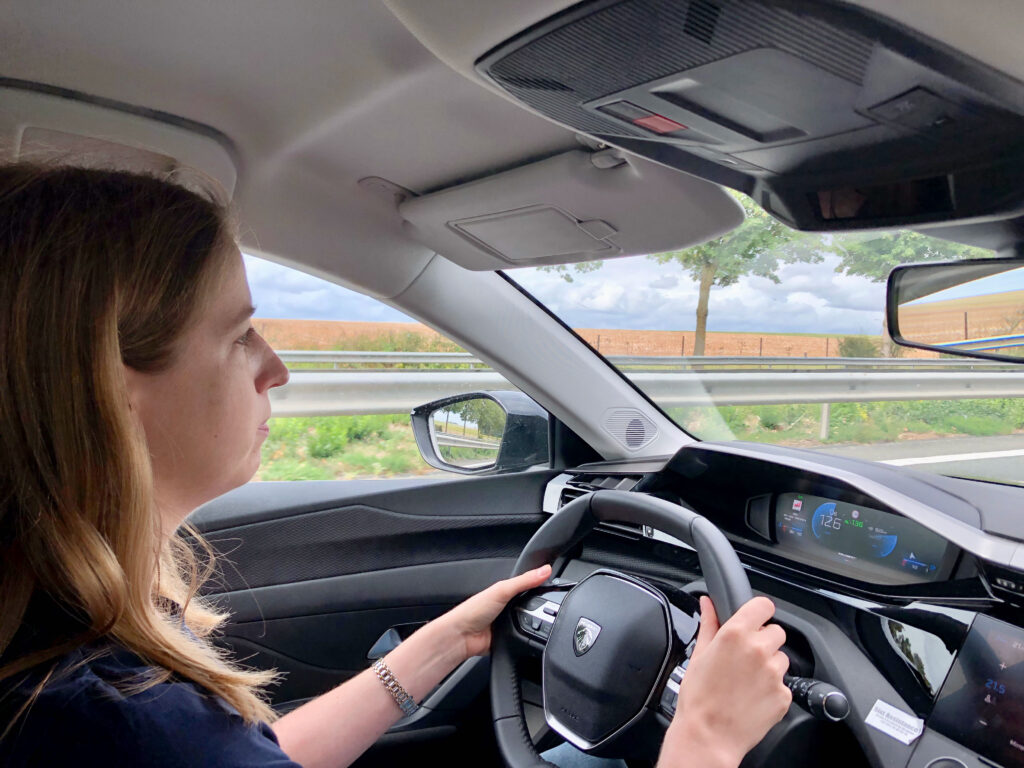
As a short-stay visitor, you can drive in France on your US driver’s license. It’s not required, but its a good idea to bring an International Driver’s Permit (IDP) with you. This is simply a translation of your driving license. It is not valid on its own and must accompany your actual driving license. You can obtain one quickly, easily, and cheaply from your local American Automotive Association (AAA).
Can you rent a car in France with an American license?
You can rent a car in France with a US driver’s license. An IDP (see above) is not necessarily required. The rental agency can ask you to present an IDP, but they might not request it at all.
Each rental agency has their own terms and conditions for renting. Most car rental agencies in France impose a minimum age of 18 years (or more for certain vehicles) and at least one year (sometimes two years) of experience. Additionally, there are supplementary charges for younger drivers. Anyone below the age of 25 is generally considered a young driver.
While manual cars are very common throughout Europe, there are also options for automatic cars. The rental price for automatic cars is typically higher. It’s beneficial to shop around when choosing a car rental agency. Compare costs as well as terms and conditions.
How is driving in France different from driving in the States?
Driving in France is not too different from driving in the United States and should be fairly manageable for an American to handle. Here are a few noteworthy differences to keep in mind before getting behind the wheel. This is based on what stood out to me!
Traffic Circles
While the United States is ruled by stop signs and traffic lights, France is primarily ruled by traffic circles. Known as un rond-point in French, roundabouts are super practical, allowing for a continuous flow of traffic.
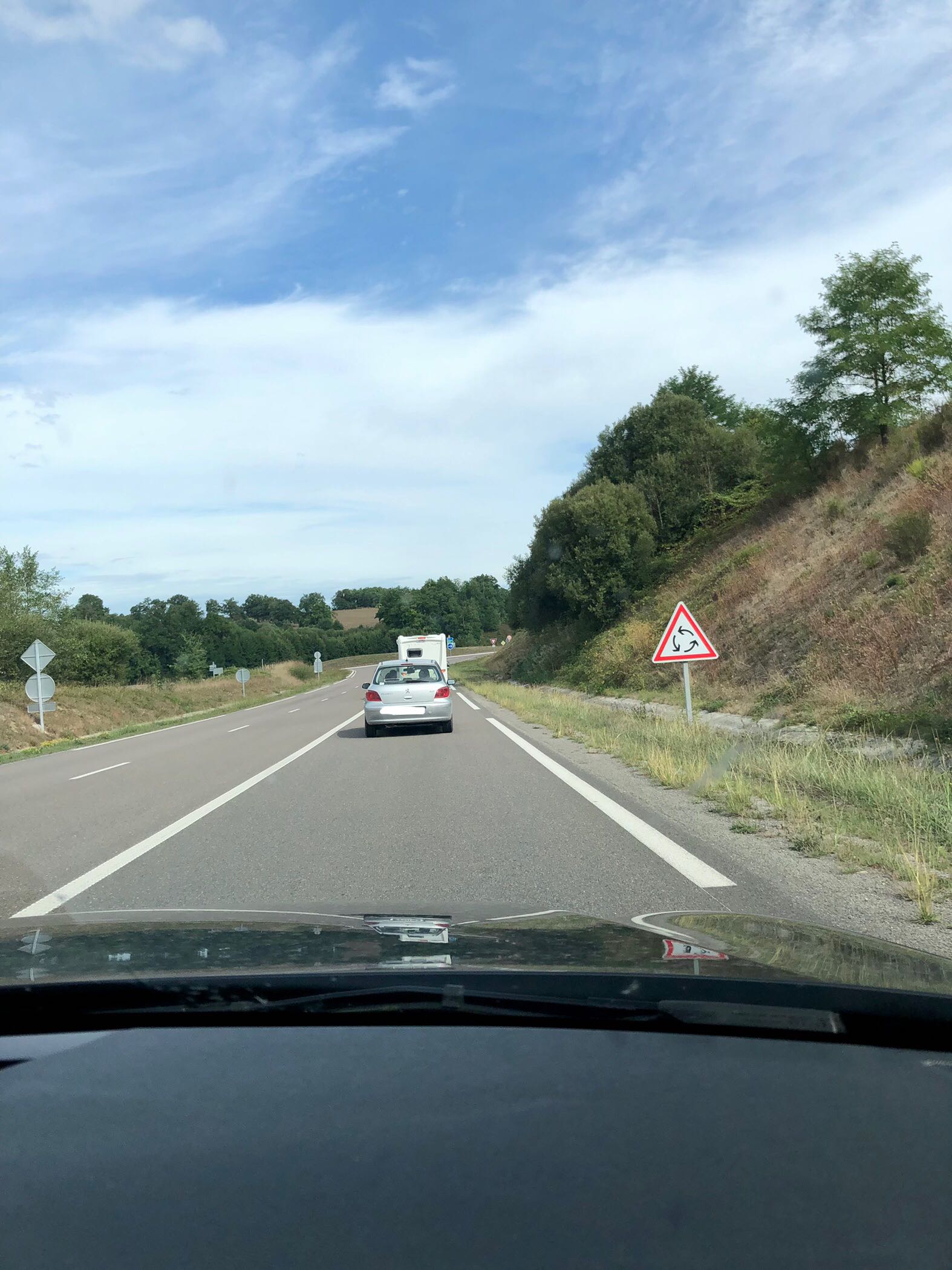
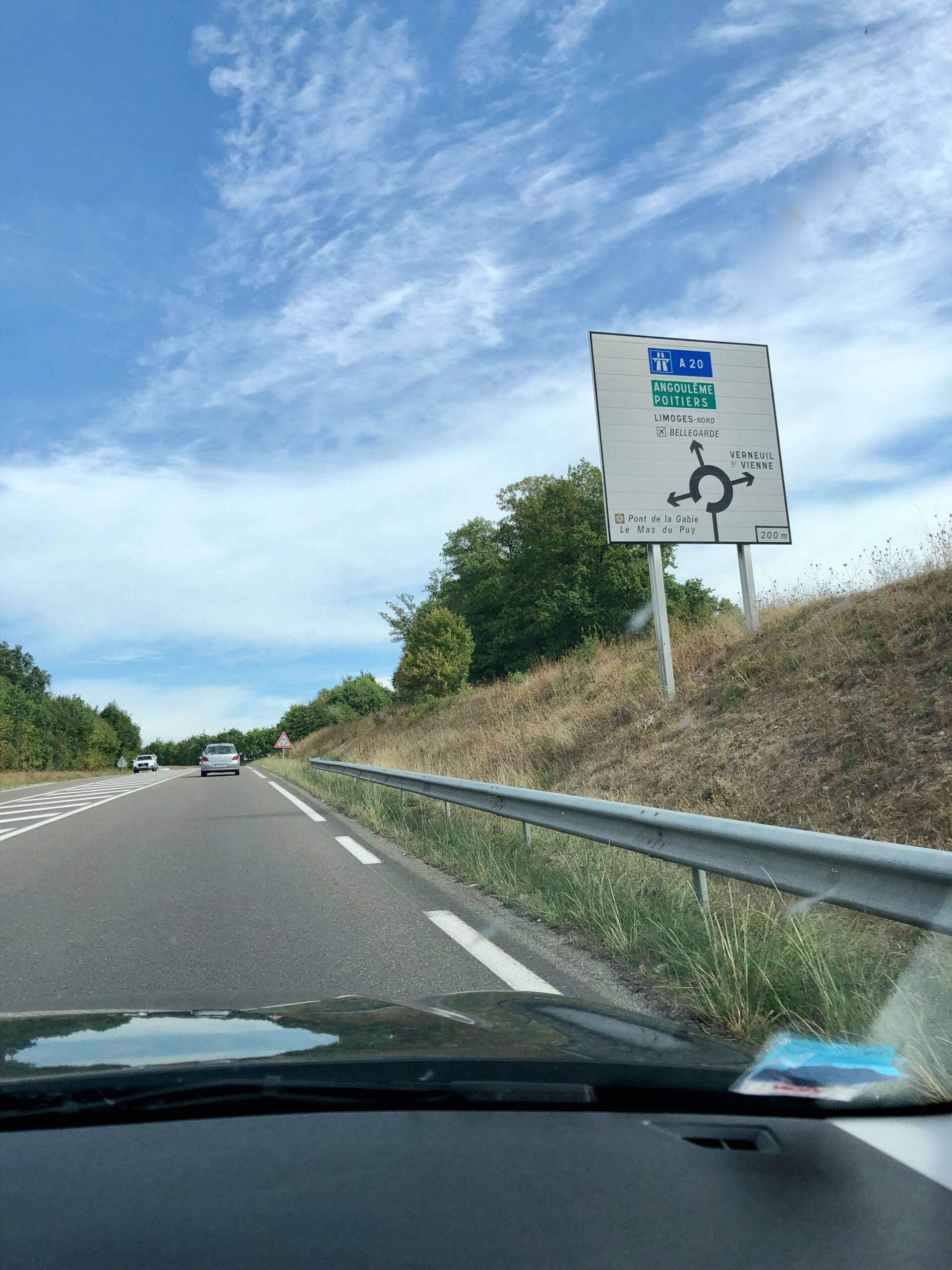
In truth, you can go around as many times as you like in order to verify signage and make sure you head off in the right direction. If you’re traveling around more than half of the roundabout, keep to the left lane (if there is one). Keep your left turn signal on until you are ready to exit. A right turn signal will allow others to know that you are exiting. Be sure to check your blind spot on the right before leaving the rotary.
Priorité à droite
Priorité à droite is a fundamental French driving rule that can cause confusion for foreigners and natives alike. The basic tenet of priorité à droite is that you must yield to cars entering from the right. In this way, even if you are driving along a main road, you might find a car suddenly pulling out in front of you from a minor road. This can be confusing (and dangerous!) for Americans who are used to having priority on a main road.
Although priorité à droite is the default rule for determining who has the right of way, there are so many signs around France indicating when it is not in effect that one wonders why they didn’t just repeal this rule in its entirety.
At a rond-point, if we’re abiding to priorité à droite, those in the traffic circle are supposed to yield to those entering. Indeed, this is the case for perhaps the most frightening of all the French roundabouts… I’m speaking, of course, of the rotary around the Arc de Triomphe. However, most traffic circles throughout France these days have a cédez le passage sign for those entering to yield to those already in the roundabout. This will probably feel like common sense to you!
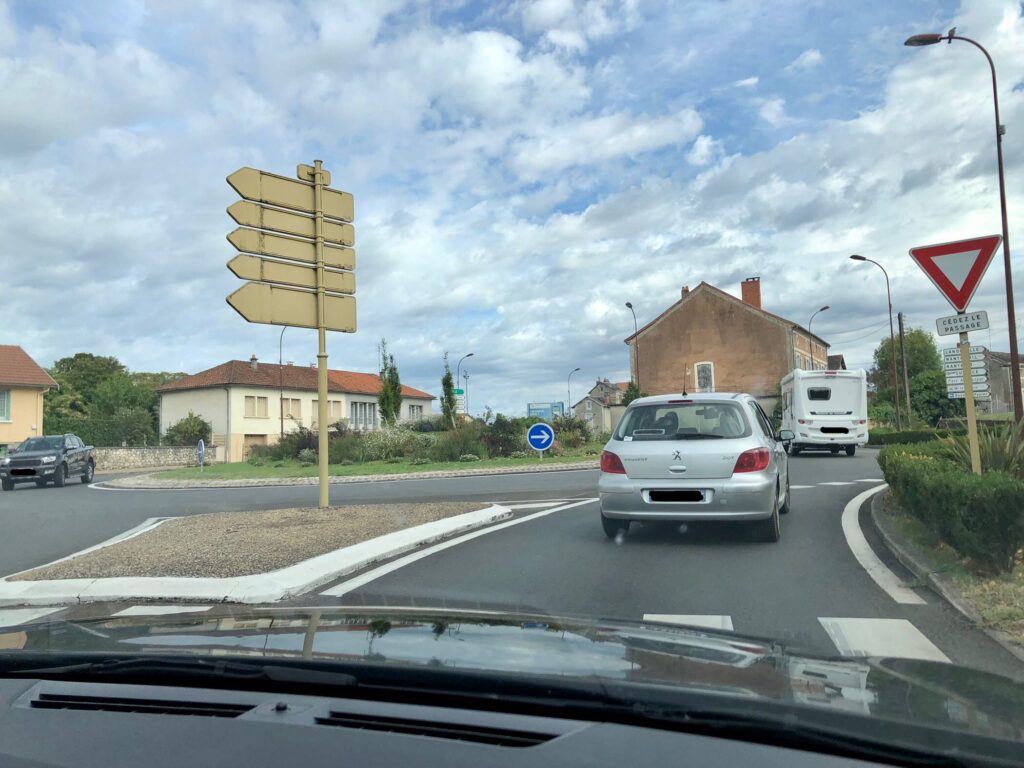
A yellow square (diamond) sign means that you have the right of way and priorité à droite does not apply. Many major routes will have signs like this. When you see that the yellow square has been crossed out, priorité à droite is back in force. This is frequently the case when entering a town or village.
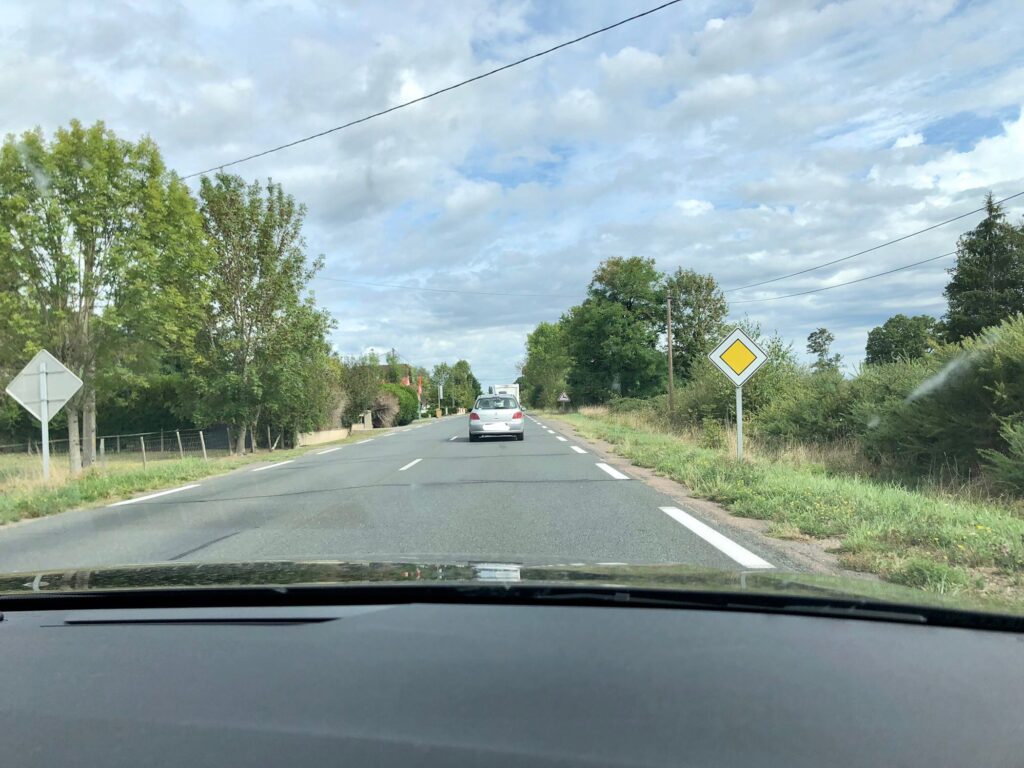
Another indication that drivers on the main street have priority over minor streets is if you see a solid white line on the minor road. This signifies that the driver on the smaller road needs to stop, thereby yielding to the cars already on the main street.
Right on Red? Don’t even think about it!
As you roll to a stop at a traffic light, resist the urge to creep forward in preparation for making a right turn on red. Unlike in the States, this is not the default. Right on red is not allowed in France unless otherwise indicated.
Speed Limits
Take note that speed limits are indicated in kilometers per hour (kph), not miles per hour (mph) 😉
What I find most frustrating about driving in France is that the speed limit is not always displayed. Sometimes, you’ll simply encounter a sign indicating that a certain speed limit is no longer being imposed and you can return to the normal speed limit. It’s expected that you know what type of road you are driving on and the speed limits that are associated with that type of road.
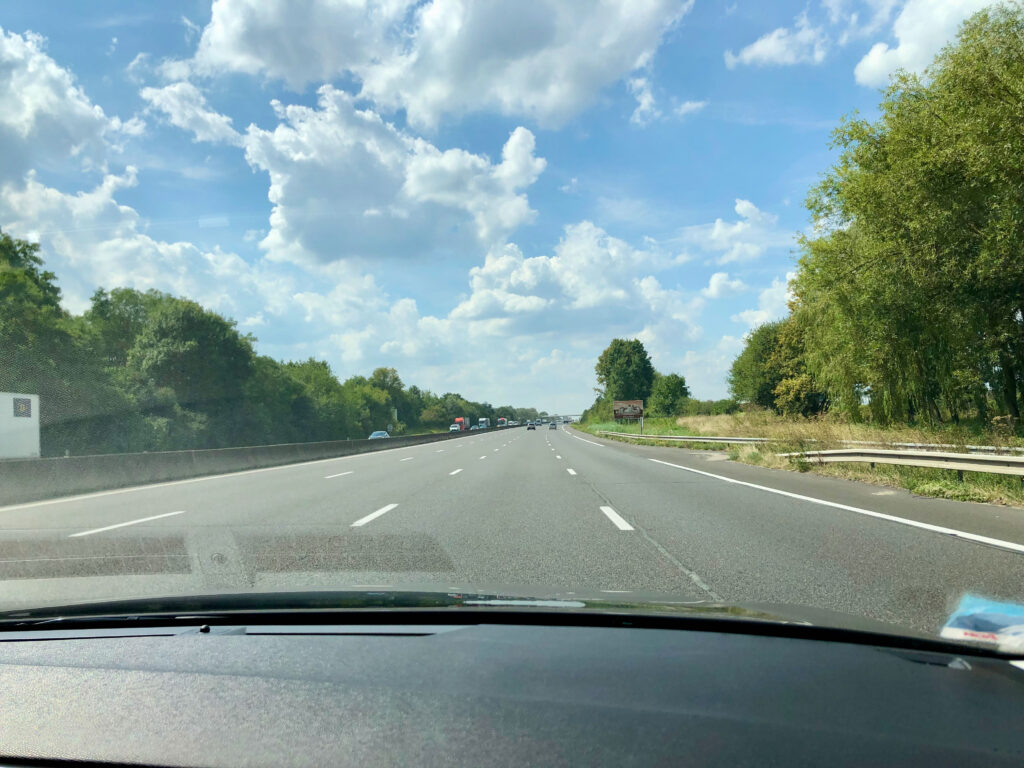
Routes Nationales in France are designated by the letter N followed by numbers. Routes Départementalesare designated by the letter D followed by numbers. Both are generally toll-free, yet larger and with higher speed limits than communal roads.
When in a town or rural area, communal roads can be quite narrow in some areas. It’s often necessary to pull off the road slightly in order to provide enough room for a car coming in the opposite direction to pass by.
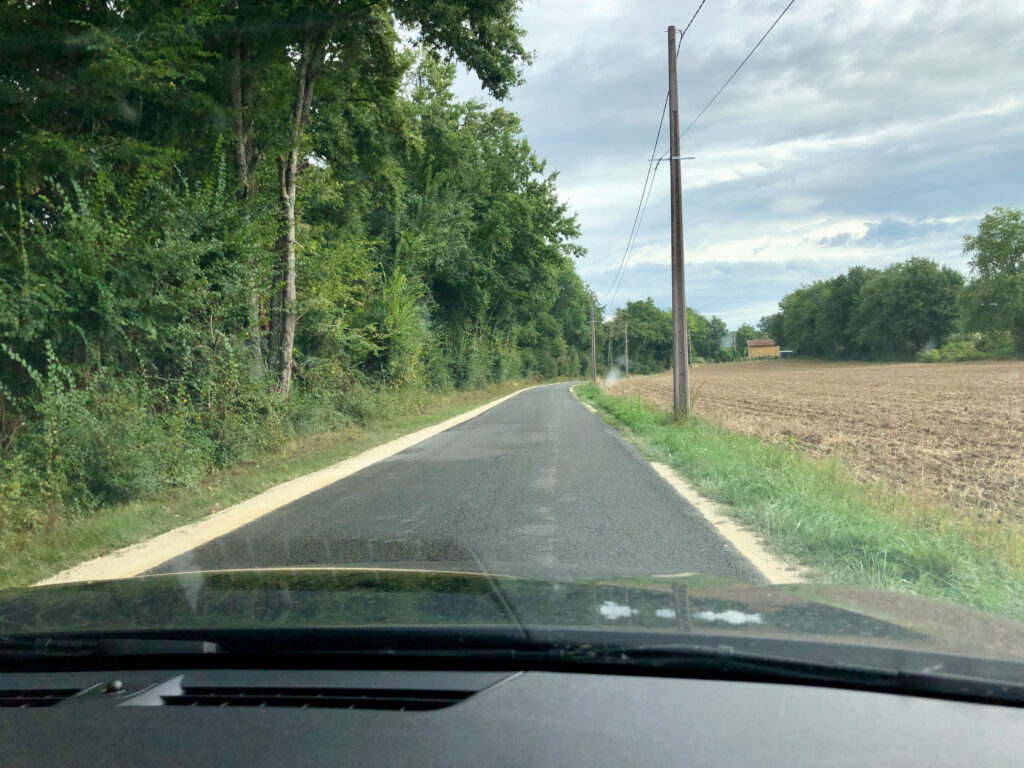
He's still got it after all these years!
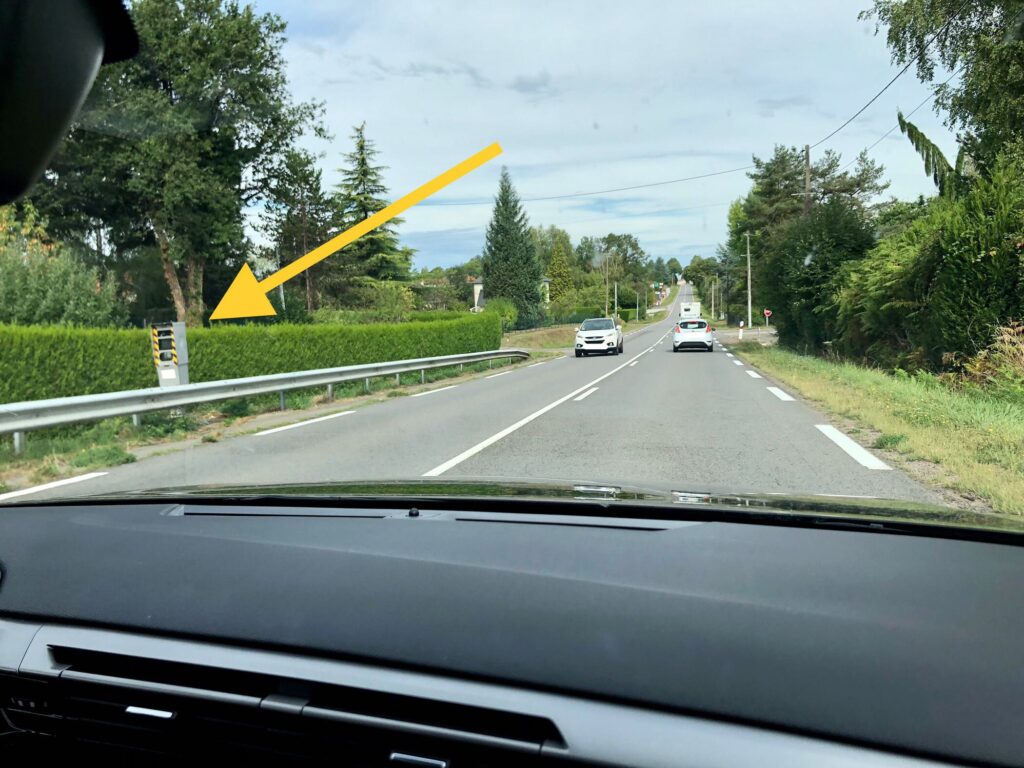 Here is a traditional radar on a French road.
Here is a traditional radar on a French road.







